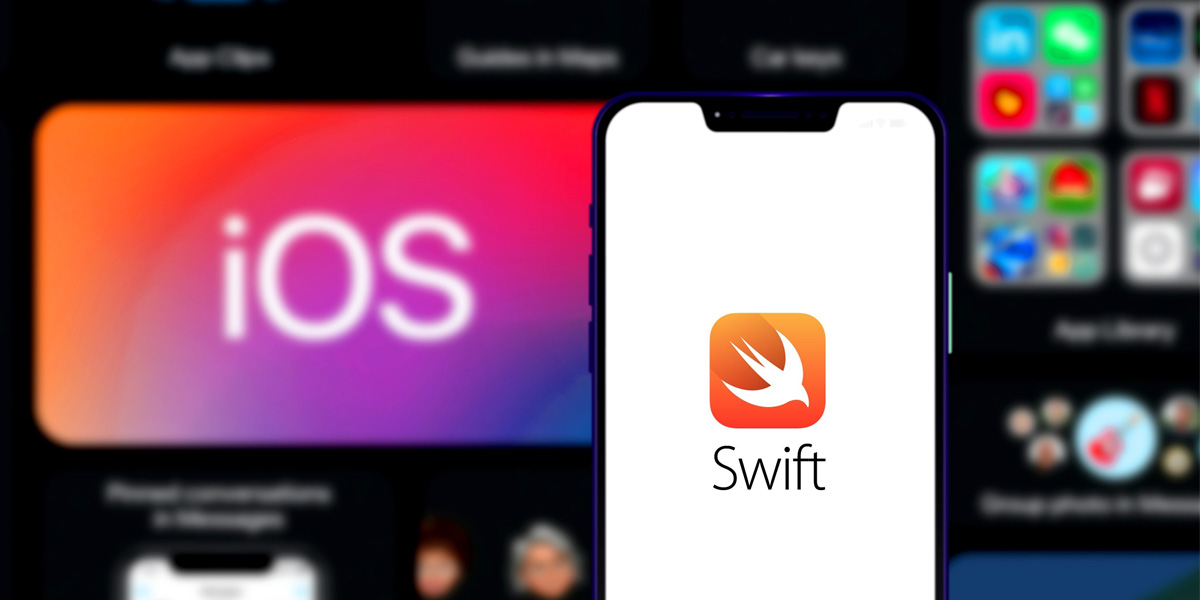Technological advancement periodically does make gigantic leaps, but for the most part, you’ll witness tech advancement making progress in incremental steps, producing constant motion. An example of this is observed in mobile app development technology. This arena has transformed the way we live, and over the past two decades we have stood witness to newer and better technologies making their way to our programming machines. With each one handing us unique advantages, we choose those that give us the best leverage in terms of speed, security, convenience, and more.
iOS app development with Swift has changed the way apps are being built – it brings simplicity and easy readability to your process. Previously, developers used Objective-C to build iOS apps, which consumed more time. But when you build your iOS app with Swift, the process is quicker, you have more security, a better user interface, and maintenance is easier.
What you should know about Swift
Swift is a general-purpose, multi-paradigm programming language introduced by Apple in 2014 for the iOS, iPadOS, macOS, tvOS, watchOS, and Linux applications. Apple chose to open source the code in 2015 in order to increase uptake. The Apple Store was the second-largest app store as of the second quarter of 2020, with nearly 1.82 million apps for iOS. Many of these apps are, to some extent, written in Swift, notably Airbnb, Facebook, LinkedIn, Lyft, Slack, and Uber. That says a lot about Swift.
The advantages of programming with Swift
Speed and cost-effectiveness
Swift offers you speed almost three times better than Objective-C, according to the official Apple website. It is also much more straightforward to read and write. Swift allows you to create your iOS app more rapidly since it uses much less code than other languages. Consequently, your iOS app development cost can potentially be lower.
Objective-C Compatibility
iOS projects can be written in either language due to compatibility with Objective-C. This is particularly beneficial for large projects that are being improved as new Swift features are introduced and then incorporated into the Objective-C codebase.
Minimal maintenance
An app developed with Swift is easy to maintain. Objective-C is managed in two separate files, whereas Swift merges the Objective-C header (.m) and execution files (.h) into a single program (.swift) file.
Improved user experience
Swift-developed apps take less time to update and consume less on-device memory, giving users an improved app experience.
Better memory management
A technique known as Automatic Reference Counting (ARC), allows Swift to identify class instances that aren't used. These are automatically removed without any manual programming intervention.
ABI-driven code compatibility
A programming laguage that facilitates code compatibility or code communication will make programming easier, and it will prevent past code from going to waste. With ABI consistency, your Swift environment lets you produce binary compatible apps and libraries, which means different versions of Swift and Objedtive C can remain operable.
More stability with optionals
The more your developer or app development agency can leverage optionals, the better your app will be. Optionals are immensely advantageous, and they bring more stability to your code.
Disadvantages with choosing Swift as your programming language
Though Swift was created to make it easier for developers to manage and write app code, there are a few limitations for you to keep in mind.
A new language
Created in 2014, Swift is a relative newcomer compared to Objective-C, which has been around since the 1980s. Swift has a small set of tools and libraries, despite recent improvements with ABI stability and backward compatibility.
Binary compatibility issues
While you may enjoy ABI Stability with Swift 5.1, code compiled with different versions of Swift can still encounter certain problems.
Mirroring Functionality Vs. Reflective Programming
Swift is not a reflective programming language, such as Java or Kotlin. Instead, it offers a mirroring functionality as a substitute.
Smaller community
Another minor drawback is that, while Swift's community is rapidly expanding, it is still limited in comparison to other programming languages.
A New language learning curve
Although Swift is a simple language to learn, it does take time to master it; this learning lag time can be problematic for some projects.
Is it advisable to use Swift for your iOS app?
Swift is quickly becoming a popular programming language for iOS development, despite its comparatively recent creation. In spite of some initial challenges, it is growing into a mature language that could potentially displace Objective-C as the go-to language for creating iOS applications. It is pertinent to note that Eventbrite, Kickstarter, LinkedIn, Twitter, and Whatsapp are some brands that have already selected Swift.
In the long term, Swift can support businesses in filling the iOS mobile app gap. It is easy to comprehend and is becoming the preferred choice for providers of iOS app development services. Being an open-source platform, it has a considerable community supporting it with contributions from anyone who wishes to take part.

